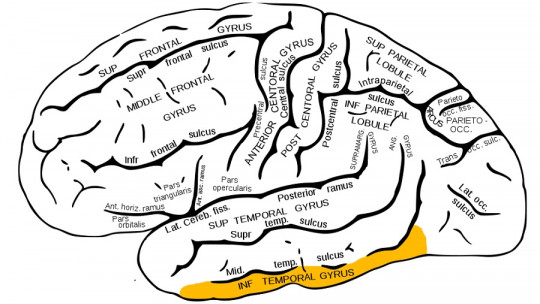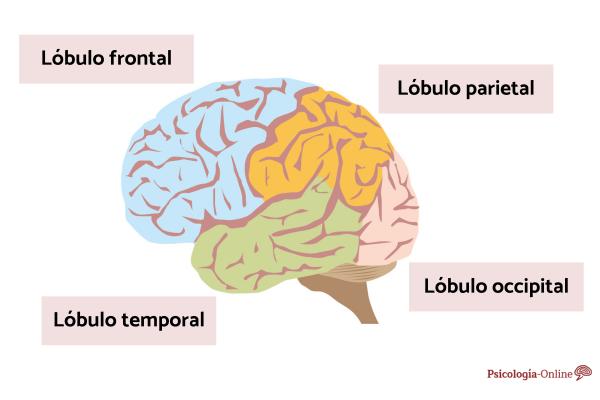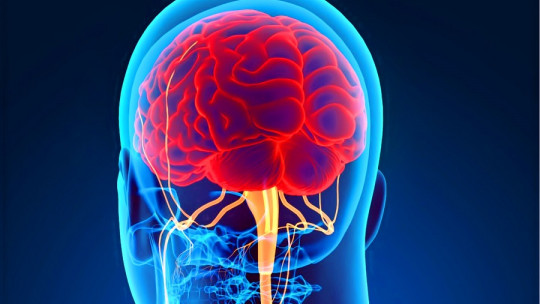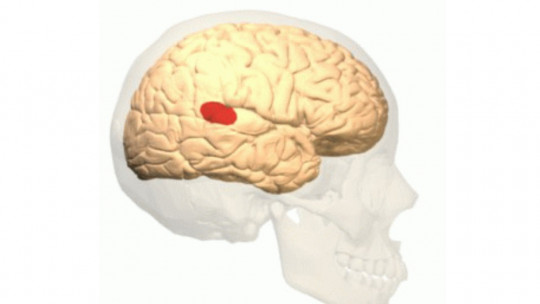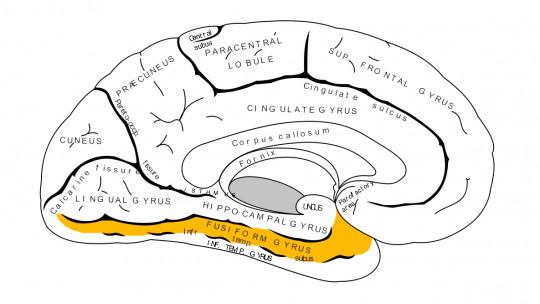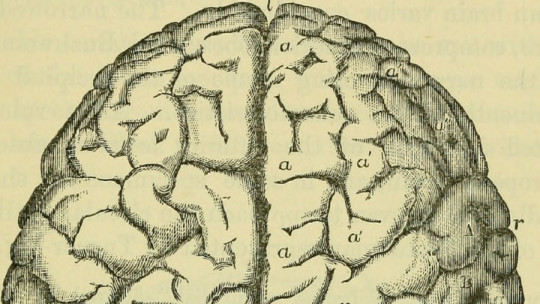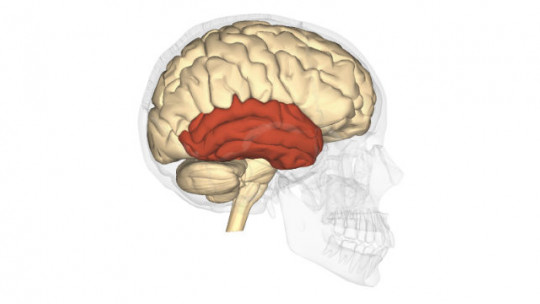
The temporal lobe It is one of the most important structures of the cerebral cortex, and therefore also one of the most studied in neuroscience. You cannot understand the functioning of the Central Nervous System without knowing even a little about what the temporal lobes are.
Not only does it cover a good part of the surface of the brain: it also allows us to globally integrate a good part of the sensory information that reaches us through the environment and has a very relevant role in processing the contents of vision and hearing, as well as language in general.
In this article we will see what the characteristics of the temporal lobes are (since there are a couple of them in each brain), where they are located, and what functions they perform.
Location of the temporal lobe
Although the whole brain functions in a continuous interaction between the different brain areas, studies carried out in neuroscience reflect that many of the aptitudes, abilities, capacities and functions of the nervous system are especially linked to certain regions.
In this sense, the human cerebral cortex has traditionally been divided into five sections, called lobes of the brain. One of them is the temporal lobe, a fundamental brain region for skills as fundamental as speech or auditory perception, in addition to being closely linked to affectivity, memory and recognition.
The temporal lobe It is located on the lower side of the brain, approximately at the level of the ears This region is anatomically separated from the parietal lobe, which corresponds to the upper lateral area, by the Sylvian fissure, and is in close contact with the occipital lobe. Likewise, it is the lobe with the greatest connection with the limbic system (along with the orbito-frontal area), therefore having great influence on emotions and moods, as well as memory.
It is necessary to keep in mind that there are actually two temporal lobes, one in each cerebral hemisphere. This consideration is relevant, since some of the functions of this lobe are located in most people in a specific hemisphere. However, when part of a temporal lobe stops functioning due to neurological alterations, these functions can be carried out totally or partially by its counterpart in the opposite hemisphere.
On the other hand, the boundaries of the temporal lobe, like those of any other part of the brain, are very porous and to some extent diffuse. They do not correspond exactly to physical limits of areas of the nervous system responsible for certain tasks but it is a concept that helps to locate oneself when mapping the brain.
Most relevant brain locations
Within the temporal lobe there are a large number of structures This is because in this area of the cerebral cortex many interconnections from different parts of the brain coincide, some of which are not very similar to each other in terms of their functions. In reality, the concept of the temporal lobe responds to much more anatomical than functional criteria, so it is natural that there are groups of nerve cells and small organs specialized in different tasks.
This causes the temporal lobe to incorporate groups of neurons in charge of carrying out many tasks, for example, integrating types of perceptual information that arrives from different senses. This is what makes it have an important role in language, a mental function in which sounds, letters, etc. have to do.
Some of the most relevant parts of the temporal lobe are the following.
1. Auditory cortex
In the temporal lobe are the primary, secondary and associative auditory cortices These areas of the brain are responsible for, in addition to perceiving sounds, encoding, decoding and interpreting auditory information, being an essential element for survival and communication. In this last aspect, its participation in the understanding of speech stands out, which occurs in Wernicke’s area.
2. Wernicke area
Within the secondary auditory area of the dominant cerebral hemisphere, this generally being the left one for the majority of the population, Wernicke’s area can be found. This area is the main person in charge of understanding language, allowing verbal communication between individuals. However, language production occurs in another area known as Broca’s area, located in the frontal cortex.
3. Angular turn
This area is of special relevance, because it is the one that allows reading and writing In it, visual information is associated with auditory information, allowing each grapheme to be assigned its corresponding phoneme and making it possible for a change to occur in the type of data with which the brain works, from images to sounds with a symbolic component.
In people with injuries in this area, reading is usually affected, being very slow or non-existent.
4. Supramarginal gyrus
It is part of the tertiary sensory area This turn participates in tactile recognition, in addition to participating in language. Thanks to it we are able to recognize the relief of letters using our fingers and associate them with sounds.
5. Medial temporal
This area, which encompasses the hippocampal region and several relevant cortices, participates in memory and recognition, processing information and helping to move from short-term memory to long-term memory. The left hemisphere is responsible for verbal information, while the right hemisphere stores visual patterns.
It is in this area of the temporal lobe where the first lesions in Alzheimer’s appear, producing its initial symptoms.
6. Parieto-temporo-occipital association area
It is an area of association that is responsible for integrating visual, auditory and somatic perception Among many other highly relevant functions, its participation in the perception and attention to space stands out, and suffering from hemineglect may cause its injury.
7. Association area of the limbic system
This part of the temporal lobe is responsible for providing emotional information to perceptions, integrating emotion and perception. It also participates in memory and learning. Likewise, other research has shown that it also has to do with the regulation of sexual behavior and the maintenance of emotional stability.
In short, this part of the temporal lobe integrates mental processes linked to emotions and allows our experiences to leave a mark on us that goes beyond what we can explain with words.
Disorders derived from injuries to the temporal
All the areas that we have seen are of great importance for the correct functioning of the human organism in general and the temporal lobes in particular.
However, It is not uncommon for accidents, illnesses and alterations to occur that can cause malfunctions of some of them. Let’s look at some typical disorders of temporalis injury.
1. Cortical deafness
This disorder involves the total loss of hearing ability, despite the fact that the sensory organs function correctly. That is, the auditory information reaches the perceptive organs, but is not processed by the brain, which means that the perception of sound is completely lost. This alteration is produced by the destruction of the primary and secondary auditory cortices, or the nerve pathways that access them, of both hemispheres.
2. Hemiacusis
As with deafness, this condition is produced by the destruction of the primary and secondary auditory cortex, with the difference that This destruction has only occurred in one hemisphere
In this way, hearing in the ear opposite the hemisphere in which the injury occurred is completely lost, but since the auditory cortices of the other hemisphere are still functional, hearing is possible through the other ear.
Furthermore, in some cases it is possible that over time a certain level of hearing may also be gained by the ear that has become unusable, because neuronal plasticity allows parts of the brain to learn functions that were previously performed by others, and this It can even occur by passing tasks from one hemisphere to the other.
3. Prosopagnosia
In cases of prosopagnosia, the affected person loses the ability to recognize faces, even those of their most loved ones. The recognition of people must occur through other processing pathways in the brain.
This alteration is caused by bilateral injury to the temporoccipital area
4. Hemineglect
Caused by the involvement of the parieto-temporo-occipital association area, This disorder involves difficulty in orienting, acting or responding to stimuli that occur on the opposite side of the injured hemisphere Attention to that perceptual hemifield ceases, although the person themselves can move so that the stimuli they miss remain within reach of the functional perceptual field. It usually appears together with anosognosia, which is the lack of knowledge of the existence of an alteration.
5. Aphasias
They are understood as aphasias language disorders due to brain injury The effects vary depending on the location of the lesion, and when it affects the temporal lobe there are certain characteristic symptoms.
Of the aphasias that are caused by a lesion in the temporal region, Wernicke’s aphasia stands out (produced by an lesion in the area of the same name, in which there is a loss or difficulty in verbal comprehension and repetition, which causes serious problems. to those who suffer from it), the anomic (loss or difficulty in finding the name of things, produced by lesions in temporo-parieto-occipital associative areas) or the transcortical sensory (in which there are difficulties in understanding but not in repetition , being the product of lesions in temporo-parieto-occipital associative areas).
If the connection of Wernicke’s area with Broca’s area, the arcuate fasciculus, is injured, the so-called conduction aphasia will occur, in which difficulty in repetition and a somewhat altered understanding but good fluency is maintained.
6. Anterograde amnesia
This disorder involves the inability to record new material in memory That is, it is impossible for the patient to recover (whether permanent or temporary disability) declarative information about the activity carried out after the injury.
This alteration is produced by injury to the medial temporal lobe, especially the hippocampus. Lesions in the left hemisphere will affect verbal information, while in the right the affectation will tend to be in other ways or non-verbal.
7. Klüver-Bucy syndrome
It is a very common disorder in dementia, such as Alzheimer’s This condition is characterized by the presence of meekness, passivity, hyperorality, difficulties with sustained attention, disappearance of fear and hypersexuality. It occurs when lesions of the medial temporalis occur bilaterally.

